The Gift of South Dakota
Subscriptions to South Dakota Magazine make great gifts!
Subscribe today — 1 year (6 issues) is just $29!
Rekindling a Memory
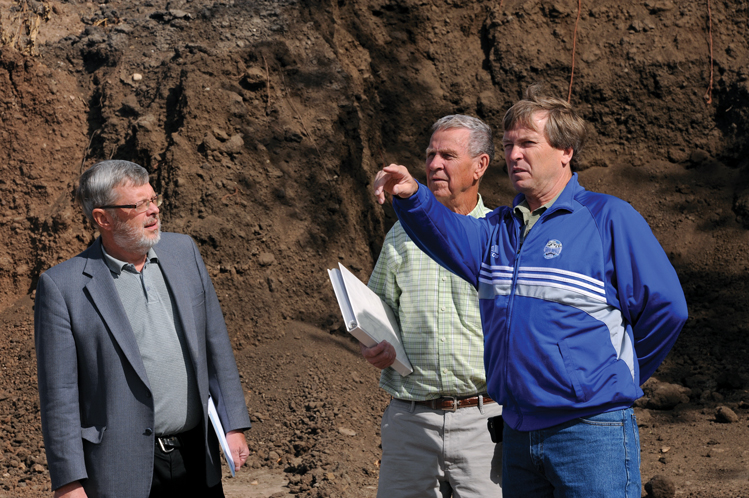 |
| Writer Paul Higbee (left) toured the B-17 crash site with Harold and Greg Stone, who have used decades-old reports to pinpoint the spot on Rapid City's east side where the bomber went down. |
On a September day in 1943, a pair of 12-year-old boys set out on foot across Rapid Creek and into fields familiar to them, immediately east of Rapid City.
Although they knew Rapid Valley’s countryside, this was no routine hike. An airplane had crashed here the night before and they decided to investigate. Sure enough, the boys found smoldering remains—not big pieces of wings and fuselage but bits of debris blown across hundreds of feet. Surprised to find no one about, they picked souvenirs before encountering two military policemen who told them to leave. The MPs had been rerouting traffic along old Highway 40, which ran right through the crash site, and apparently weren’t expecting gawkers who hiked cross-country. The policemen didn’t confiscate the souvenirs and had no way of knowing they were chasing away the individual who would rekindle South Dakota’s memory of this tragedy seven decades later.
The crash, late on the evening of September 6, 1943, took the lives of all 10 Army Air Corps men aboard. They were flying a heavy four-propeller bomber, the mighty B-17 Flying Fortress, and were part of the 398th Bomb Group. Their peers in the 398th would shortly complete Rapid City Army Air Base training and make their way to England, serving under General Jimmy Doolittle in the Eighth Air Force, and pounding Nazi targets in 1944 and 1945.
The Army Air Corps quickly investigated the Rapid City crash and determined the crew had been well rested, the ground crew fully competent, and found no indication of in-flight mechanical failure. But the report noted that western South Dakota’s rugged terrain could present challenges. Rapid City, the investigators noted, “is practically surrounded by hills and the path of the airplane was over the hills located between the city and the Air Base.”
It’s likely that pilot Orville Prater, flying at night, lost sight of the base’s lights, obscured behind a ridge as he descended. Perhaps at that moment he pulled his plane up because he thought he was about to hit the ridge, or maybe he spotted radar towers on a hilltop and decided they were too close. Either way he pulled the B-17 almost straight up, went into a stall, and then dived.
“I would say he went up 200 feet before he fell off, directly right down on the nose,” witness Harry Rothermal told investigators. He added that he was the first on the scene. “I went down, parked within 500 feet of the crash. There was intense heat and bullets whizzing all around … there were no signs of life. Just total wreckage.”
Customers exiting a late movie at the Elks Theater, two and a half miles away, heard the explosion after impact.
Harold Stone, one of the boys who walked to the wreck the next day, heard nothing. He was at his family’s home on St. Joseph Street, between the Elks and accident site, when the B-17 crashed a few minutes after 11 p.m. Later, Harold’s older brother came home and reported what happened.
“That family sacrificed itself entirely for the war effort,” says Harold, “and just as much so as if he had died at Normandy.”
When Harold visited the crash site on a September morning 69 years later, he said time had stripped some details from his 1943 memories. The smell of the smoldering ruin — intense or waning? He can’t recall. His friend Chuck Coyle, the other boy to walk to the site, never forgot how each of the four propellers churned into the ground to form pits. Probably so, but Harold doesn’t remember that. And his souvenirs are long gone, perhaps tossed by his mother when he served in the Army during the Korean War.
But never faded or lost were Harold’s questions that stemmed from his 1943 visit. Who were the airmen? What went wrong? Most haunting is a question that can never be answered: What raced through the flyers’ minds, as they knew they were falling without enough altitude to pull out of the dive?
Later, as Harold discovered the degree to which Rapid City had forgotten the crash, a new question formed: “What if you were a family member, maybe a nephew or niece to one of those airmen, and you knew he died here, but you visited Rapid City and found no marker or record?” he asks.
Rapid City forgot in part because none of the flyers were local. Newspapers made only brief, passing reference to the accident — typical of coverage of such incidents in the middle of World War II, when every day brought casualty news. In fact, the crash happened during the very week that the United States and its Allies began the dramatic invasion of Italy.
By 1943 no one doubted that air power would prove central to the war’s outcome, much more so than anyone could have predicted just a few years before. The issue of Time magazine on newsstands the night of the crash optimistically noted that bombers “may decide the war before an Allied soldier sets foot on western European soil.” If that was the hope (although one that proved sadly naive) then the nation understood the need for swift preparation of military pilots and aircrews. Americans knew that training fatalities were as inevitable as combat deaths. In fact, the previous June a B-17 flew from Rapid City to a Badlands gunnery range, caught fire, and broke up in flight, killing all nine aboard. Also in June, three B-17s flying in formation over Miner County collided in flight, killing 11. Those planes had taken off from the Sioux City, Iowa, base, and the 11 fatalities make the crash the deadliest South Dakota aviation accident to this day. All totaled, there were 120 fatal B-17 accidents in the United States in 1943, claiming 789 lives. Most of the time crews were novices, working to rack up flight hours. By no means was the B-17 considered unusually dangerous. Small fighters had accident rates many times that of the B-17, but often just a single pilot was aboard when a fighter went down.
Time moved on, the war ended, and Harold grew up to fight another war. He came home to Rapid City and in 1953 started a successful furniture manufacturing enterprise, a company that evolved into Dakota Bison Furniture. At age 81, Harold is still found in the plant or on the showroom floor daily.
“I went down, parked within 500 feet of the crash. There was intense heat and bullets whizzing all around … there were no signs of life. Just total wreckage.”
The Rapid City crash wasn’t the only World War II aviation tragedy to touch Harold. In 1944, in Nebraska, his brother-in-law Earl Endres was badly burned in a B-26 accident that killed other fliers. A few years ago Harold learned that his brother-in-law’s accident was well documented online. He wondered whether a few mouse clicks would answer his questions about the Rapid City crash.
He found information, all right, but it took more than a few clicks. An initial Internet search was just the beginning of a two-year journey Harold and his son, Greg, have taken to bring the night of September 6, 1943, out of darkness.
“We learned there’s an industry called aviation archaeology,” says Greg, who runs Dakota Bison Furniture with his father. “Several years ago the government sold its old crash reports to private companies, and we started with one of those companies. I think it cost us $40 to buy the report, which was written within a week of the crash, and runs about nine pages.”
The report says the doomed B-17, Army 25226, was among several to take off that evening for night flight training. It left the runway at 8:06 with instructions to “fly locally” until midnight. But at 9:45 all planes were ordered by radio to return because of anticipated stormy weather. Apparently Army 25226 had flown a considerable distance because it wasn’t until 11:03 that it approached Rapid City from the southwest and received landing instructions. After that no further word was heard from the plane, but seven minutes after the instructions were given, says the report, “the Control Tower operator observed a brilliant flash of light which appeared to be an explosion and a crash,” a few miles distant. While bad weather was, indeed, on its way, it hadn’t hit yet and visibility was good.
The report includes photos of the crash site, almost certainly taken the same day Harold and Chuck visited. Best of all, though, is the list of names of those aboard. The airmen came to South Dakota from Alabama, Illinois, Indiana, Massachusetts, Michigan, Ohio, Oklahoma and Pennsylvania. Orville Prater, the pilot, was a second lieutenant who had earned his wings just four months before at age 21. There were three other officers: copilot Walter Duma, navigator Steven Kosciow, and bombardier Bryant Grover. Everyone else’s rank was sergeant—engineer John McCarty, assistant engineer George Barton, radio operator Frank Heuser, assistant radio operator Thomas Cox, and gunners Robert Vanhatta and Paul Eisenhart.
Knowing the names after nearly seven decades represented a big step forward, although learning more about the men and perhaps even seeing photos of them proved labor intensive. A 1973 fire in St. Louis destroyed most of the individual military records Harold and Greg hoped to examine. But from the crash report they knew the fliers’ home counties. Then they contacted libraries in the county seats and asked for help finding obituaries. In most cases the librarians delivered.
For example, Harold and Greg learned copilot Duma of Cleveland was Harry and Katherine Duma’s only child. “That family sacrificed itself entirely for the war effort,” says Harold, “and just as much so as if he had died at Normandy.”
Harold and Greg also discovered that Sergeant Heuser of Chicago had a brother who learned of the crash while serving in England, and that Sergeant McCarty was older than most Army Air Corps aviators. McCarty, age 30, left behind a widow in Akron, Ohio.
Oddly enough, given Harold’s visit in 1943 and the report’s site photos, pinpointing the exact crash location has been difficult. New roads, tree belts growing and disappearing and industrial development changed Rapid Valley. Old Highway 40 is East Centre Street now, paralleling modern-day Highway 44, a stone’s throw away. With the site definitely pinpointed, Harold thinks, a nearby marker could be erected like one along Highway 34 in Miner County recalling that B-17 crash.
Harold hopes to find someone with a high quality metal detector because he believes plane fragments were buried on-site rather than hauled away. Hunting for buried plane parts would make Harold and Greg serious amateur aviation archaeologists, indeed. Still, even without that kind of search, the pair is reasonably certain they’ve found the ground where the plane hit. There’s no doubt that when they visit they’re at least standing within the debris field, thanks to an examination they did with a photo in the crash report. The black and white picture shows a line of hills and a building with a distinct, sharply slanted roof in the distance behind the debris. They found the building still standing and lined it up with the hills, but just in the nick of time. Soon after Harold and Greg got the report, the old building was torn down. The owner, of course, didn’t know its relevance to local aviation archaeology. By the time it was gone, Harold and Greg had taken their own photos matching site lines in the report’s photograph.
Speaking of photos, the librarians who found obituaries also found a few portraits of the airmen. There they are, smiling across the decades, in uniform. They knew when the photos were taken that the war might lead them to places of mortal danger in Europe, North Africa or the Pacific. Death in South Dakota would have crossed no one’s mind.
Editor’s Note: This story is revised from the November/December 2012 issue of South Dakota Magazine. To order a copy or to subscribe, call (800) 456-5117.


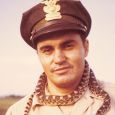
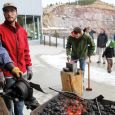

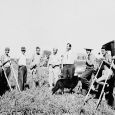
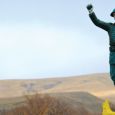
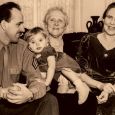


Comments
My phone is 570-527-7748
I have seven sisters,and we’ll like to know .4
Thank you.
Also how do I contact people when there are no email addresses showing.
Thank you.